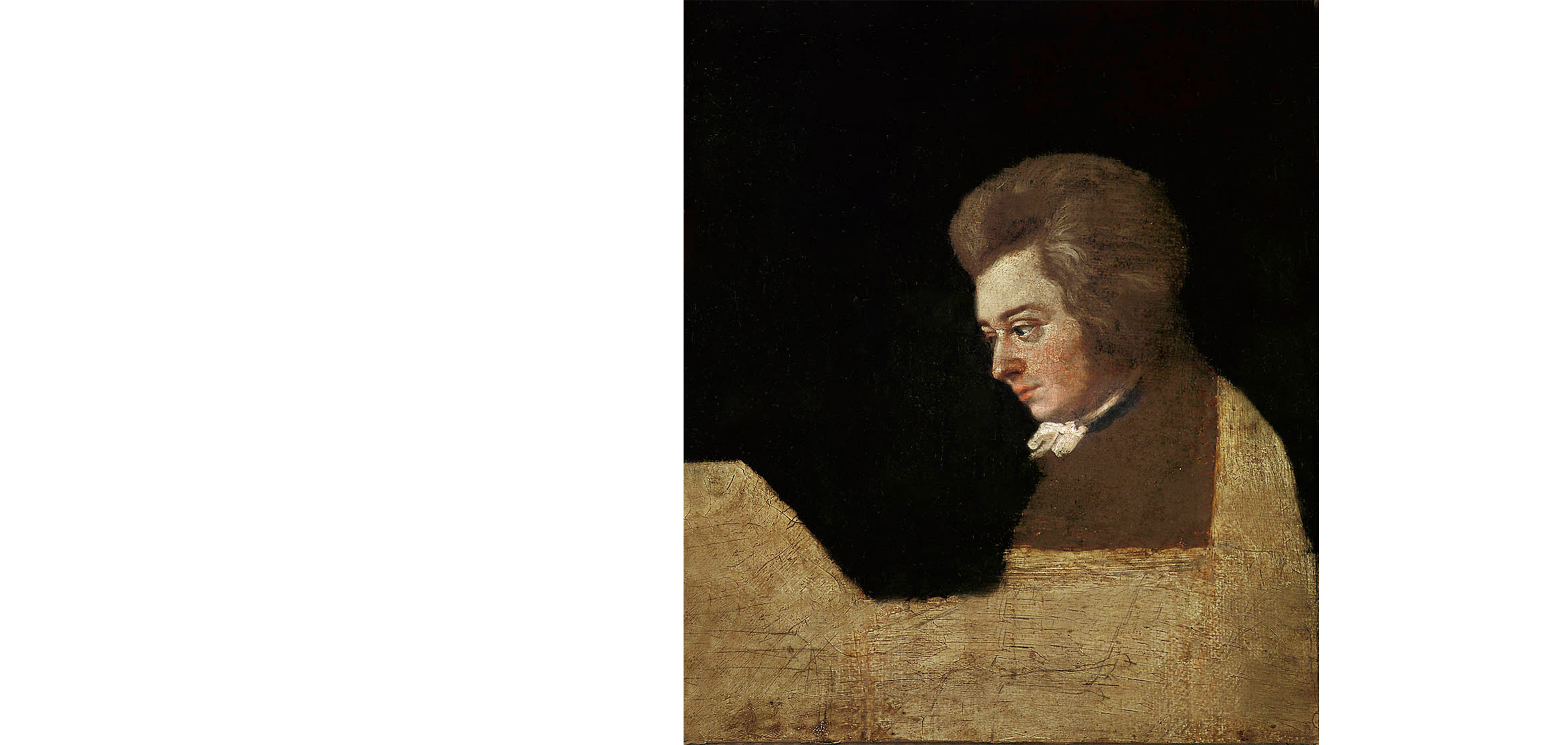November 1, 2024
Mozart as Mirror
The Making of a Reputation
Adapted from an essay by Thomas May
Adapted from an essay by Thomas May
Consider a persistently popular (although misleading) image surrounding the story of Mozart’s death. On a miserably cold, rainy day, the great composer (so the story goes) is unceremoniously tossed into an unmarked “pauper’s grave”—the final indignity heaped on a creative spirit whose true worth it will be left for posterity to fathom. As with so many assumptions about Mozart, the actual events have become almost inextricably entangled with a profusion of myths from the past two centuries (and counting).
Take that trope of the neglected genius. There’s no question that some of what we’ve since come to revere as most valuable about Mozart failed to gain appreciation in his lifetime. Yet his contemporaries (both fellow professionals and ordinary music lovers) cherished Mozart and his artistry right up to the untimely end of his career—not just the sensational memories of his bygone youth as a prodigy. Nor (pace Pushkin—the first to dramatize the baseless rumor that Salieri had poisoned Mozart) did it require a jealous disposition to understand the composer’s uniqueness. Indeed, within a month of Mozart’s burial, one of the Viennese papers suggested an epitaph for that now-notorious grave: “As a child, he who lies here, through his harmonies, added to the wonders of the world; as a man, he surpassed Orpheus. Go your way and pray earnestly for his soul.”
Story continues below...
Take that trope of the neglected genius. There’s no question that some of what we’ve since come to revere as most valuable about Mozart failed to gain appreciation in his lifetime. Yet his contemporaries (both fellow professionals and ordinary music lovers) cherished Mozart and his artistry right up to the untimely end of his career—not just the sensational memories of his bygone youth as a prodigy. Nor (pace Pushkin—the first to dramatize the baseless rumor that Salieri had poisoned Mozart) did it require a jealous disposition to understand the composer’s uniqueness. Indeed, within a month of Mozart’s burial, one of the Viennese papers suggested an epitaph for that now-notorious grave: “As a child, he who lies here, through his harmonies, added to the wonders of the world; as a man, he surpassed Orpheus. Go your way and pray earnestly for his soul.”
Story continues below...

Yet Mozart’s reputation not only spread rapidly (foregoing the pattern of a lengthy period of neglect followed by “revival”). From the start, it also fragmented into sometimes complementary, sometimes contradictory myths that began to compete with each other: Mozart as the flawless, angelic vessel of timeless beauty; the visionary who expressed “demonic” passions; the innocent or even idiot savant with no idea what he was about; and—most enduring of all—what biographer Maynard Solomon has characterized as “the eternal child,” a myth in itself replete with all manner of contradictions (from the golem-like child prodigy to the scatological and polymorphous bon vivant glorified in Peter Shaffer’s Amadeus).
One constant, however, amid all the competing narratives, is that each of these myths tends to focus on a particular aspect of Mozart’s output—whether drawing attention to a few specific works or to certain traits that appear across genres. Mozart’s reputation is thus continually re-assessed and redefined, its ever-changing images serving as a mirror to the preoccupations of his admirers.
One constant, however, amid all the competing narratives, is that each of these myths tends to focus on a particular aspect of Mozart’s output—whether drawing attention to a few specific works or to certain traits that appear across genres. Mozart’s reputation is thus continually re-assessed and redefined, its ever-changing images serving as a mirror to the preoccupations of his admirers.
